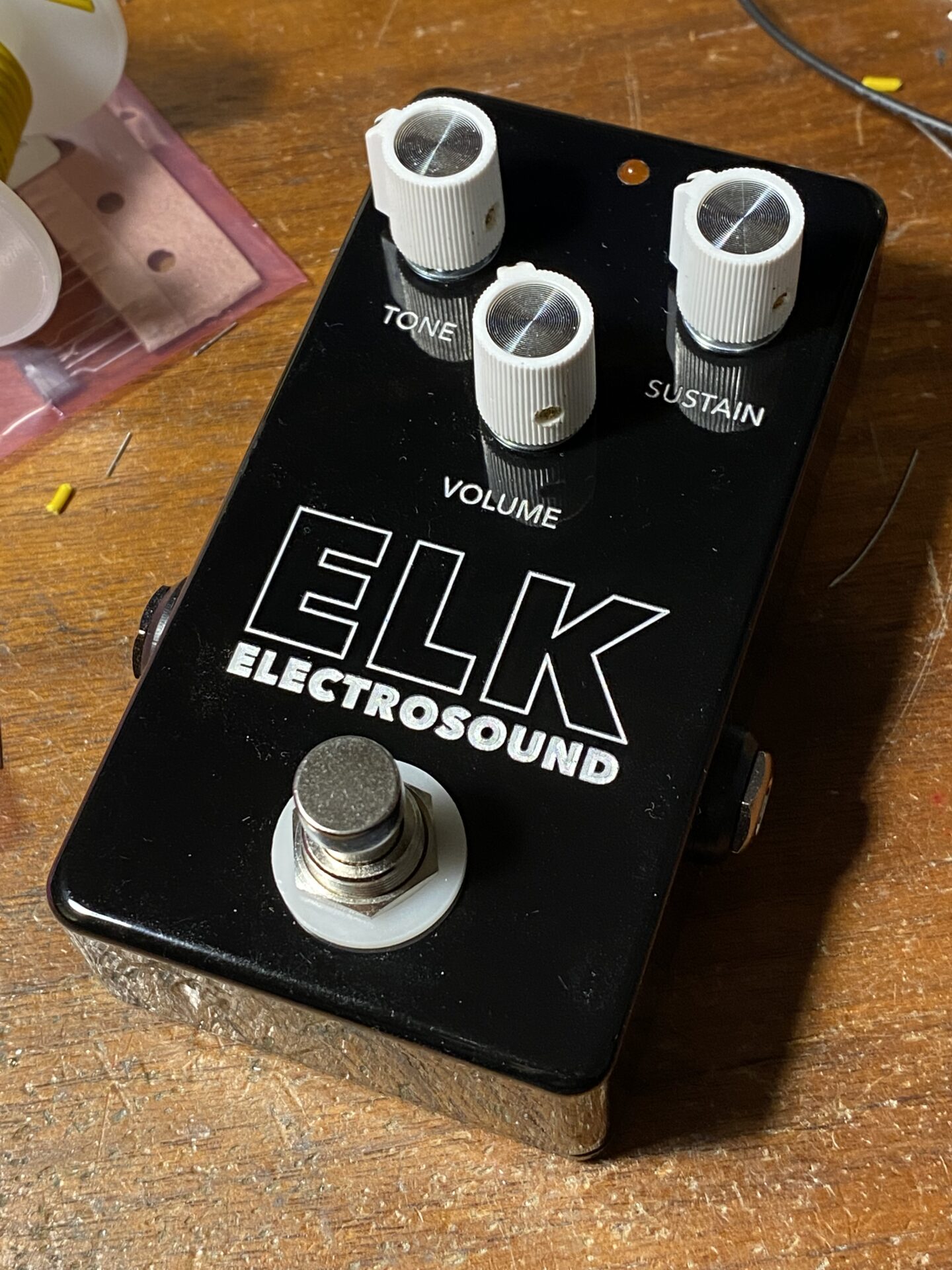I heard this new song by Boris and it got me interested in the band again. This is apparently an add for a new EarthQuaker Devices pedal. If you haven’t heard Boris you should take a listen. They are on BancCamp here.
Reading an interview with the guitar player Wata. It mentions the Hizumitas, her new signature pedal from Earth Quaker Devices, being “A painstaking recreation of the Japanese alt-rock icon’s beloved Elk BM Sustainar.” I had to look this up.

Turns out the Big Muff Page has me covered with some background history and a schematic! Looks like this version of the Big Muff is most the standard circuit. The one biggish exception is that it uses PNP rather than NPN transistors.

Here is what the Big muff Page has to say about the ELK Big Muff Sustainar:
ELK BIG MUFF SUSTAINAR / SUPER FUZZ SUSTAINAR – Among the many Japanese Big Muff clones, one of the first on the market was the Super Fuzz Sustainar, a nearly exact clone of a 1972 era Big Muff made by the Hoshino Gakki company (early units possibly made by Miyuki Ind. Co.) sometime around 1973. It was housed in an identical enclosure to the V1 Big Muff with very similar graphics. These were sold throughout the 1970s, and not long after its introduction, Gakki shamelessly changed the name from Super Fuzz to Big Muff. The pedals marked Electro Sound are the earliest, and those marked Elk Incorporated or Elk/Gakki are the later made production.
The circuit is identical to a PNP triangle circuit from 1972, almost identical to the PNP circuit shown above. The only change made was the high pass cap in the tone section at C9. Typically .004µF, it was changed to 330pF in the Sustainar. This had the effect of retaining treble when the tone pot was turned to the bass side, making the bass range more useful. When fully in the bass position the overall volume level is significantly higher than other tone settings as well.
The transistors used were NEC A733. I looked these up. They seem pretty standard but lower gain. The data sheet I read shows typical HFE of 90 to 200. Looking online I found 10 for $8.65. That’s $0.87 a piece for some meh transistors. Looking in my parts bin I found a bag with some PNP types in similar gain range.
Speaking of Big Muffs with low gain transistors, I think these sound really good. My favorite Big Muff is a clone of the Way Huge Swollen Pickle Jumbo Fuzz. It uses a transistor array that has four low gain 2N3904 transistors in one device. These transistors are in the same range Hfe range ~200.
Using the PNP types would mean the circuit would have a positive ground. With the consequence of using a daisy chained power supply being all of the noise from your other pedals would be going through audio of this pedal. It would be possible to use a charge pump to generate a negative voltage from a positive supply but this seemed more work than it was worth.
Looking through my parts I found some NPN transistors that measured about 200 to 285. Which seemed in the ballpark. I decided to use these. I can use a standard power supply, and no battery.
Now I need a PCB. This would be a good test for my MiG Buff board. This board is printed with the part numbers uses by all of the schematics on the Big muff Page! I had a board and some transistors it was time to get started!
Order some boards, find a schematic on the Big Muff Page, and follow the instructions here to build your favorite version of the Muff.
Build
Built the board on one my BMP PCBs. I had a run of these made at PCBWay.com. You can order this PCB from their shared service here.
I soldered up the boards and used what I had on hand. It was great not having to order parts. The transistors were 2N2222A types in these little metal cans. They look super old school.



Next I found a Black glossy powder coated 1590B enclosure. I setup the mill and milled the box. I spent a little time in Sketch setting up the art.




I fit the PCB, pots, and LED into the box and soldered it all up.


Then I wired it up and tested!








How does it sound? Sounds like a Big Muff! It also has some secret sauce that gives it it’s own unique flavor of the Big Muff sound. The tone Stack is has a different feel. Part of this is because the pedal uses Audio taper pots. The change in C9 also is noticeable. When you get the dial around to the bass side. The lower gain transistors provides that singing sustain and a bit of note bloom, especially when you play with a light touch.
Costs
Next to nothing. I was able to build this with parts that were laying around and left over from other builds.




















Leave a Reply